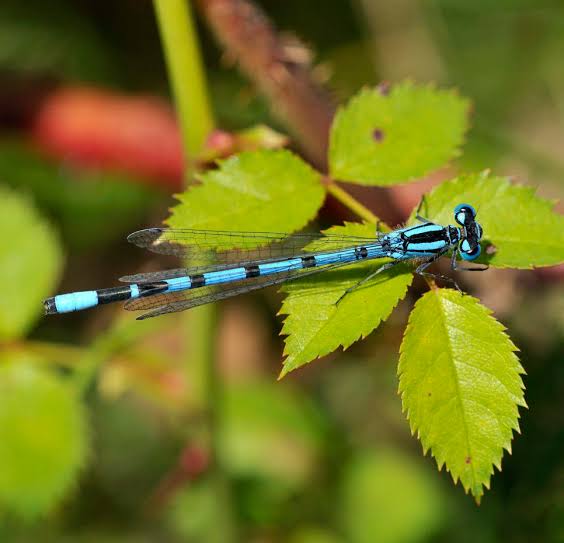Enallagma cyathigerum is a species found mainly between latitudes 40°N and 72°N; It is widely distributed in the Palearctic, and the Nearctic species Enallagma annexum was at one time considered to be synonymous with it. The species can reach a length of 32 to 35 mm. The male Common blue damselfly is pale blue with bands of black along the body; the female is either blue or dull green, with distinctive black 'torpedo' markings. To identify the small blue damselflies, of which there are seven species in the UK, it helps to concentrate on the pattern on the second segment of the males' abdomen, just behind the thorax. In the Common blue damselfly, this segment is blue with a black button mushroom-shaped mark. Living up to its name, the common blue damselfly is both very common and very blue. It is an insect which primarily inhabits freshwater habitats, such as slow flowing streams, lakes and regularly visits garden ponds. The Common blue damselfly is our most common damselfly and can be found around almost any waterbody, or away from breeding sites in grassland and woodland. It is a regular visitor to gardens and is on the wing from April to September. Adult damselflies eat mainly flying insects. Larvae eat insects in the water, worms, and occasionally small fish. Fish, turtles, frogs, and birds all like to eat damselflies. During mating, the male clasps the female by her neck while she bends her body around to his reproductive organs, forming what is called a ‘mating wheel’. The pair flies together over the water and eggs are laid within a suitable plant, just below the surface. The eggs hatch the following spring and the larvae, called nymphs, live in the water for a few years as an aquatic predator. When fully grown, the nymphs climb out of the water, up a suitable stem to moult into damselflies. Insect blood (haemolymph) is pumped into the wings and body to expand them. When the dragonfly is full size, they increase the temperature of the thorax by whirring the wings so the thorax can reach 27°C, at which point it can fly. It takes a few weeks of feeding and sunny weather before they are fully mature.
